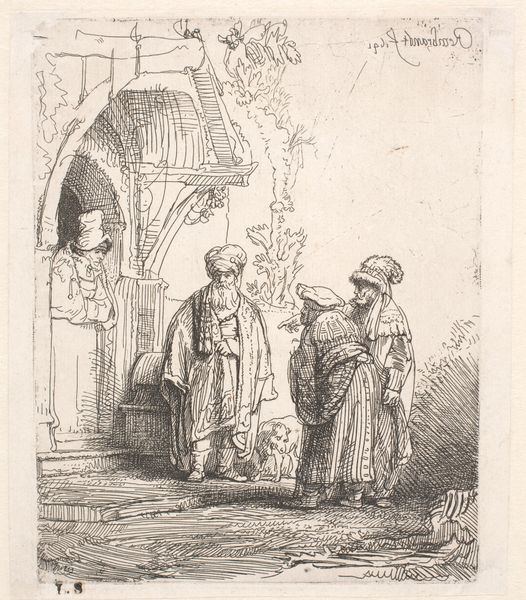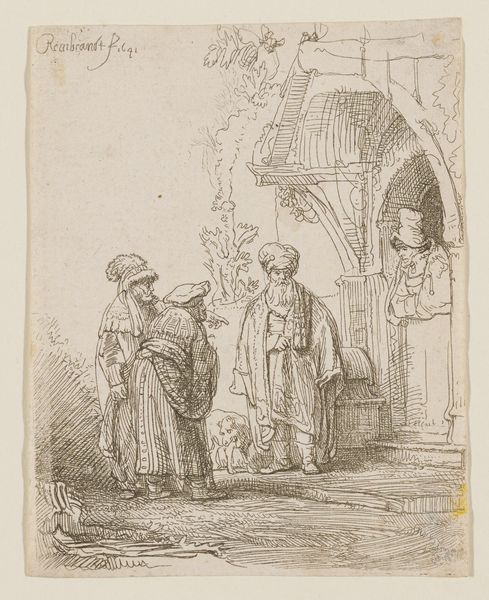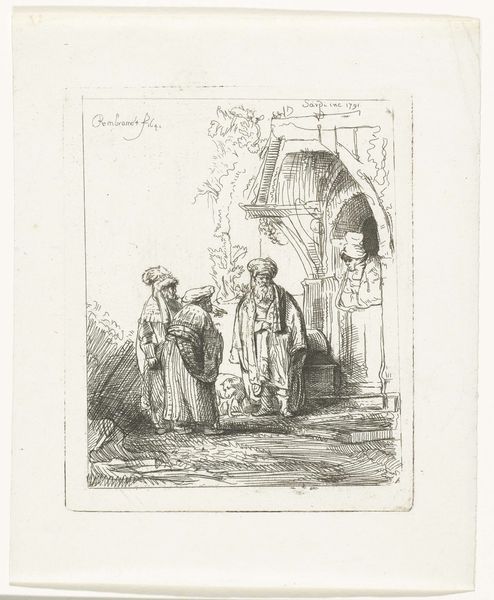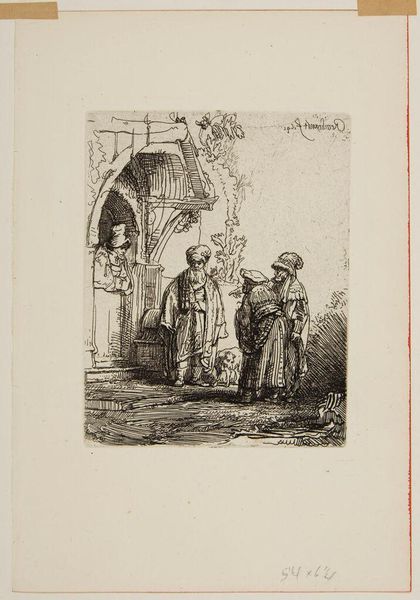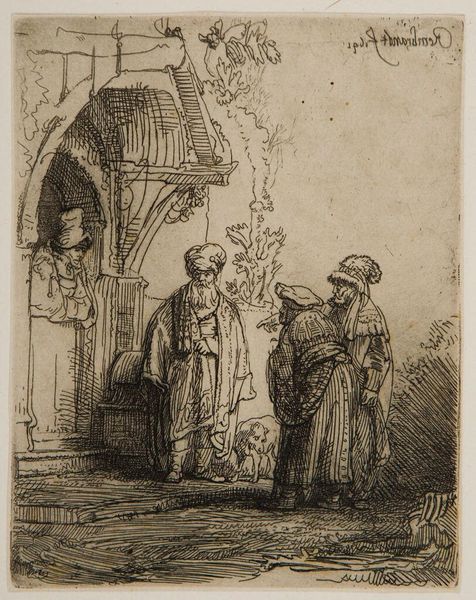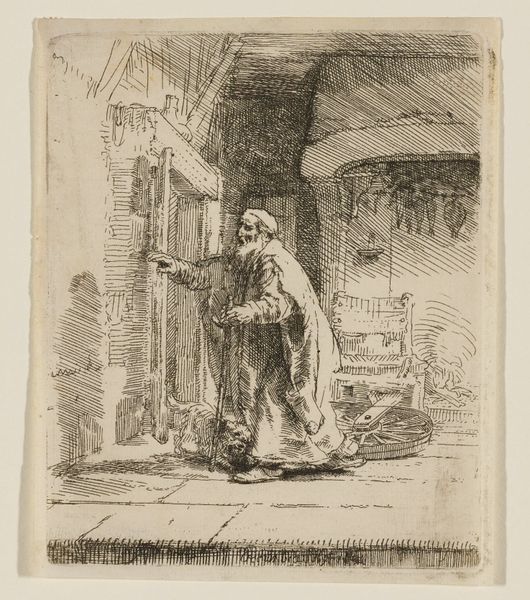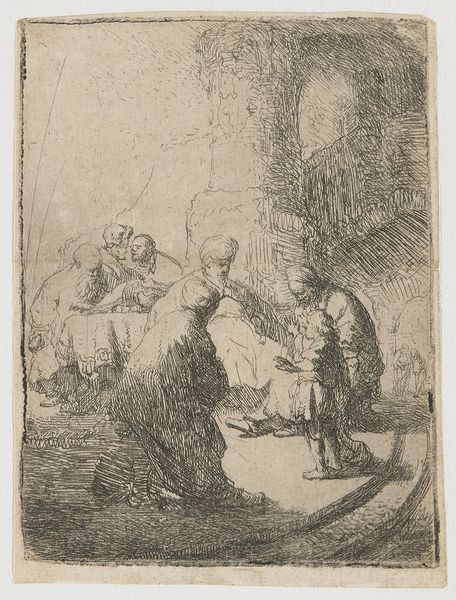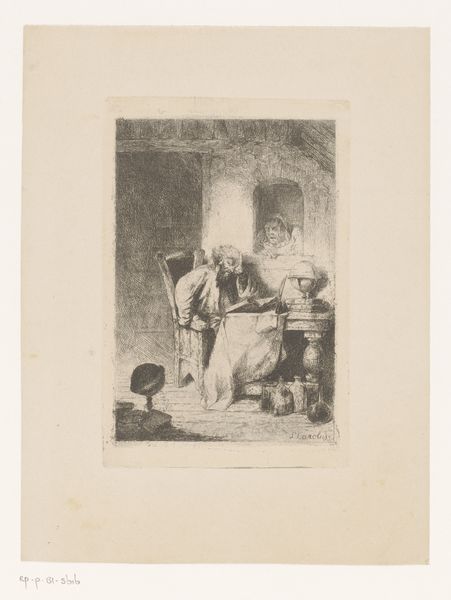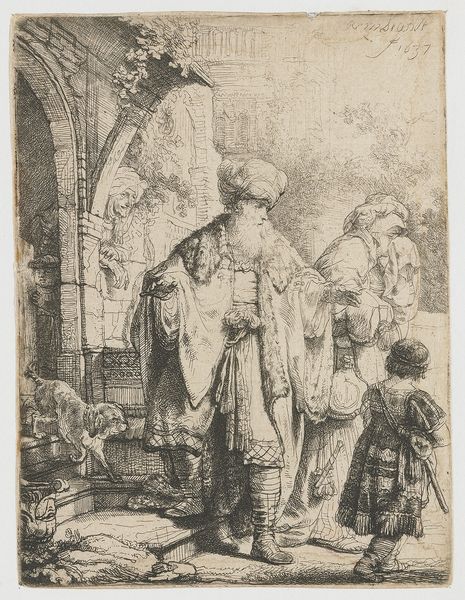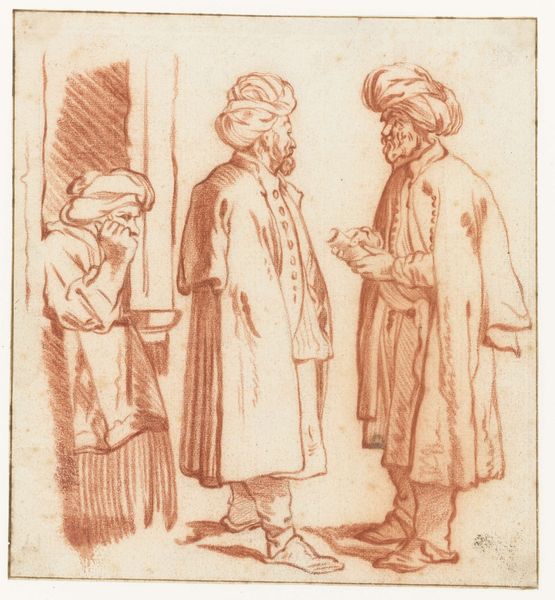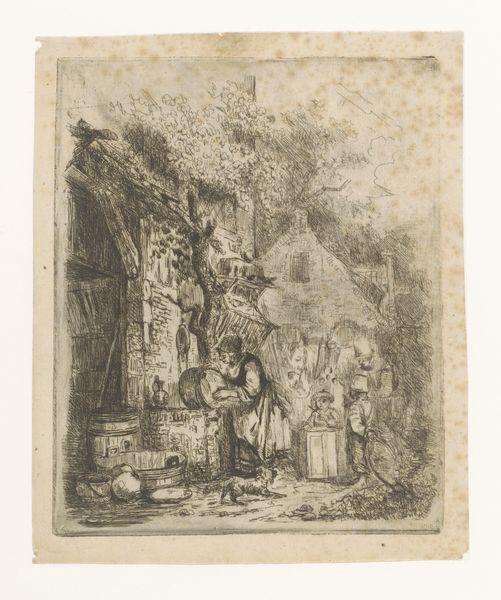
drawing, etching, paper, ink
#
portrait
#
drawing
#
baroque
#
etching
#
paper
#
ink
#
genre-painting
Dimensions: height 145 mm, width 114 mm
Copyright: Rijks Museum: Open Domain
Editor: Here we have "Three Oriental Figures", an etching by Rembrandt van Rijn, believed to have been created sometime between 1641 and 1643. It's currently housed in the Rijksmuseum. It feels quite theatrical, almost like a scene from a play. What do you see when you look at it? Curator: Immediately, I am drawn to the linear precision of the etching. Consider the composition: the artist uses tight, controlled lines to define the figures and architecture on the left, gradually loosening his strokes towards the landscape to achieve a sense of depth. Editor: So, it's not about what is depicted as much as how it's depicted? Curator: Precisely. Note the architectural structure – how its verticality contrasts with the stooping posture of the central figures. The formal arrangement creates a tension, directing the eye. Then, there's the dramatic interplay of light and shadow achieved solely through line. It invites us to deconstruct the semiotics of form. Editor: The dog; I had not initially noticed it there. What about that form, and how might one interpret the artist's intent with this inclusion? Curator: An astute observation. Consider it as an element disrupting the rigid formal arrangement, thus adding a hint of dynamic imbalance, don't you agree? What does it say when this dynamic disrupts the composition as a whole? Editor: I see how breaking the composition brings new layers of meaning! Curator: Exactly. Analyzing its visual language gives us an opportunity to analyze how Rembrandt constructs the work. Editor: I appreciate your viewpoint of focusing on line, shadow, and the interplay of the structure within the image; thank you!
Comments
No comments
Be the first to comment and join the conversation on the ultimate creative platform.
